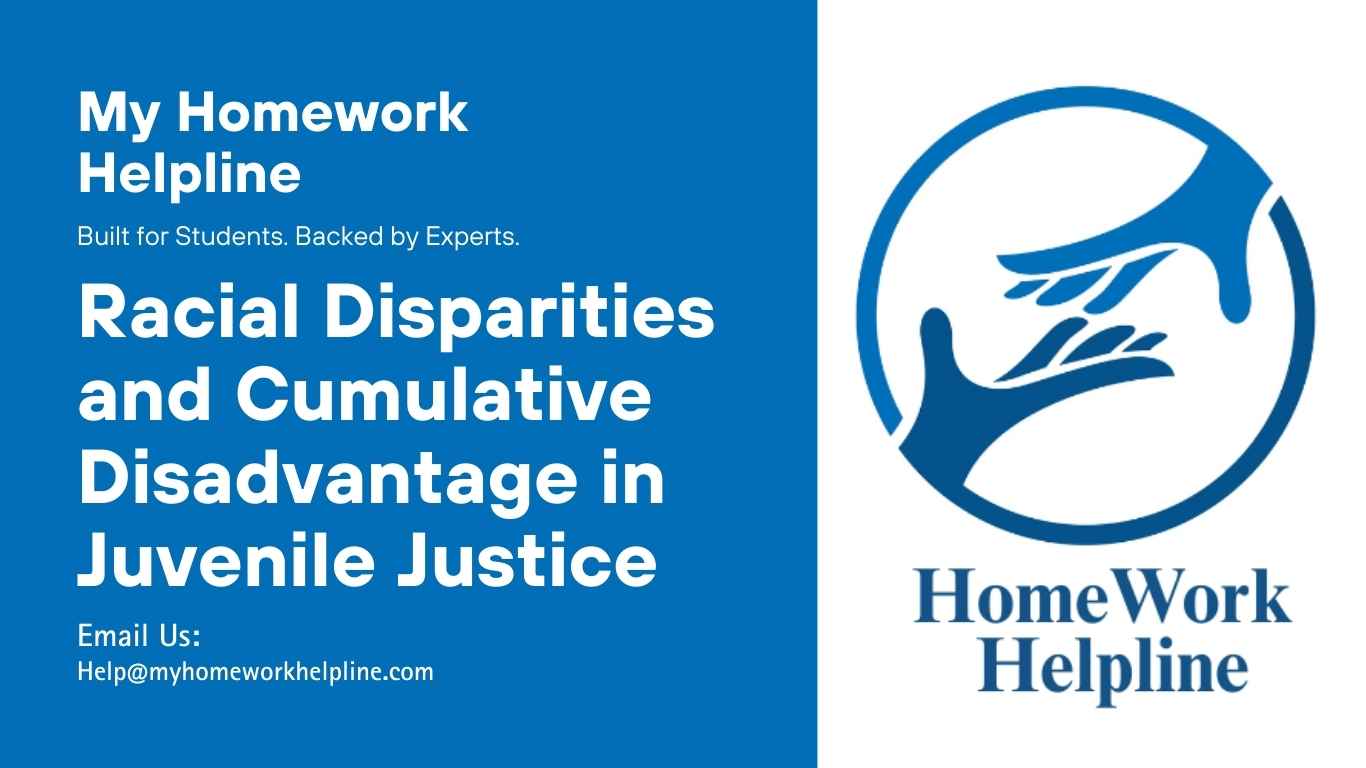Racial Disparities in Juvenile Justice Essay: Cumulative Disadvantage and Minority Youth
The Juvenile justice process has several important correctional stages meant to change the behaviors of the youth. However, some of these stages are characterized by discriminative practices that contribute to the disproportionate treatment of juveniles from different groups, such as children of color. Stages such as detention, correction, aftercare, and referrals have been marked as the most affected children of color compared to whites (Robles-Ramamurthy & Watson, 2019). Black juveniles lead in the number of youths taken for detention, even on minor mistakes in addition to rehabilitation.
Need help with a law essay or justice system assignment? At My Homework Helpline, we provide expert homework assistance on complex topics like racial disparities, youth policy, and cumulative disadvantage. Our academic team ensures your essays are well-researched, plagiarism-free, and delivered on time. Gain the support you need to achieve top grades and master legal writing with confidence.
Cumulative disadvantage is a theory that stresses how a group may be affected in the long run by a particular practice and trend. The disadvantage is the effect of a risk factor that they are subjected to. Cumulative disadvantage amongst the juveniles enhances disenfranchisements and disproportionate treatment, especially among the colored youths. Most of them grow in full awareness of discrimination channeled against them, and their mentality is affected at an early age as they believe they are the targets despite their character traits (Dragomir & Tadros, 2020). Most juveniles of color find themselves at the end of the law, and they consider it normal since they dominate correctional facilities.
Latino, Native, and Pacific Islanders face challenges ranging from assaults and tribal offenses that made most of them face detention charges and transfer to rehabilitation centers. Most Native youngsters, for instance, had difficulties aligning to federal laws such as immigration laws and public order acts (Dragomir & Tadros, 2020). As a result, the youngsters receive punishments such as detention in correctional facilities. Additionally, they fail to understand the jurisdiction of such laws and become the culprits.
References
Dragomir, R. R., & Tadros, E. (2020). Exploring the impacts of racial disparity within the American juvenile justice system. Juvenile and Family Court Journal, 71(2), 61-73.
Robles-Ramamurthy, B., & Watson, C. (2019). Examining racial disparities in juvenile justice. Journal of the American Academy of Psychiatry and the Law, 47(1), 48-52.

